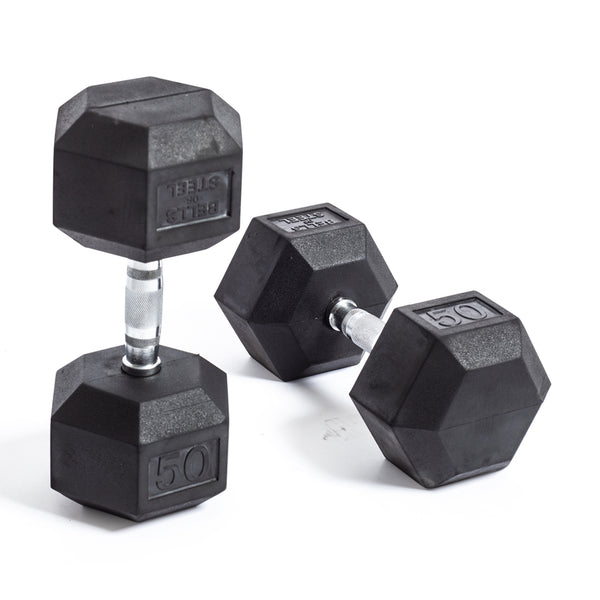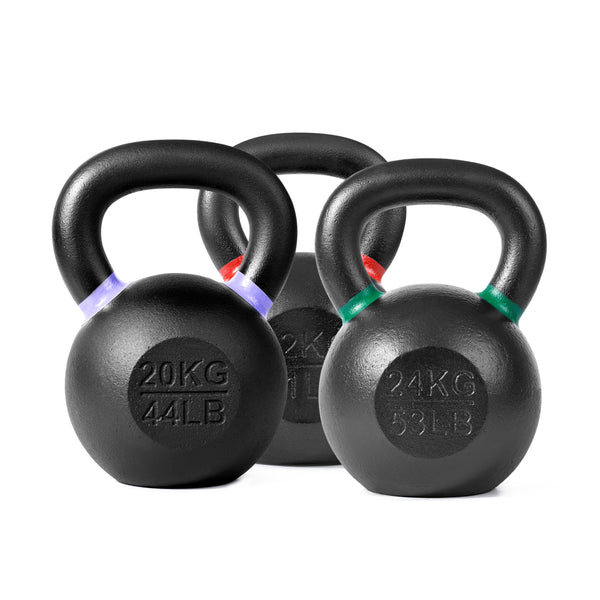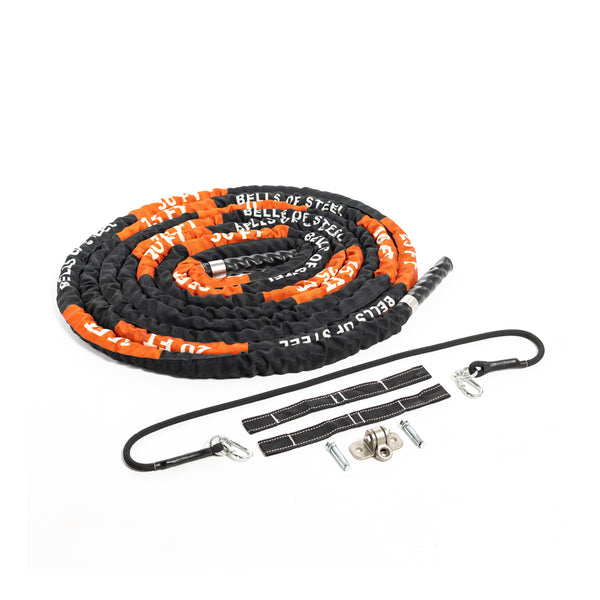Battle ropes have exploded in popularity as a go-to training tool for athletes, gym-goers, and home fitness enthusiasts—and for good reason.
With just one piece of equipment, you can torch calories, build strength, and boost your conditioning. But here’s the kicker: most people aren’t using them correctly.
In this guide, we’ll explain how to use battle ropes correctly, why they’re effective, common mistakes to avoid, and tips to take your training to the next level.
How to Correctly Use Battle Ropes
1. Anchor Securely
Loop the rope's midpoint around a stable object, such as a heavy kettlebell, power rack, or wall-mounted anchor.
2. Clear Space
Make sure you have enough room to move side to side, jump, squat, or lunge as you incorporate different movements.
3. Get the Right Length
For most users, a 30-foot rope is ideal for smaller spaces, while 40-foot to 50-foot ropes offer a greater challenge due to increased resistance.
Ideal Battle Rope Technique
Mastering form is crucial. Sloppy movement reduces efficiency and increases your risk of injury. Here’s how to do it right:
Basic Waves (Alternating Arms):
-
Stance: Stand with your feet shoulder-width apart, knees slightly bent, and core engaged.
-
Grip: Hold the ends of the rope with a neutral grip (palms facing each other).
-
Movement: Move each arm up and down in an alternating rhythm, creating visible waves through the rope.
-
Breathing: Breathe rhythmically; avoid holding your breath.
Basic Form Tips
-
Don’t lean back—stay stacked over your hips with a neutral spine.
-
Keep your shoulders relaxed, not shrugged.
-
Use your core to control the movement, not just your arms.
Common Mistakes
-
Poor Posture: Rounding your back or hunching your shoulders can lead to strain. Keep a strong, athletic stance.
-
Overgripping: Gripping the rope too tightly tires out your forearms. A firm but relaxed grip is best.
-
Short, Choppy Waves: You want clean, flowing waves that travel all the way to the anchor point.
-
No Plan: Don’t just flail around for 30 seconds. Use structured intervals or sets for real progress.
Pro Tips
-
Use Intervals: Try 30 seconds on, 30 seconds off for three rounds to start. Gradually increase duration and intensity.
-
Mix It Up: Combine waves with bodyweight moves—like squats, lunges, or jumps—for full-body conditioning.
-
Add Lateral Movement: Shuffle side to side or perform walking waves to challenge your coordination and stability.
- Try Different Grips: Overhand, underhand, and side-to-side grips target different muscles.
Final Thoughts
Battle ropes are more than just a flashy finisher—they’re a serious tool for building strength, endurance, and coordination. Whether training in your garage or outfitting a full-scale home gym, learning how to use battle ropes correctly is the key to maximizing their benefits.



